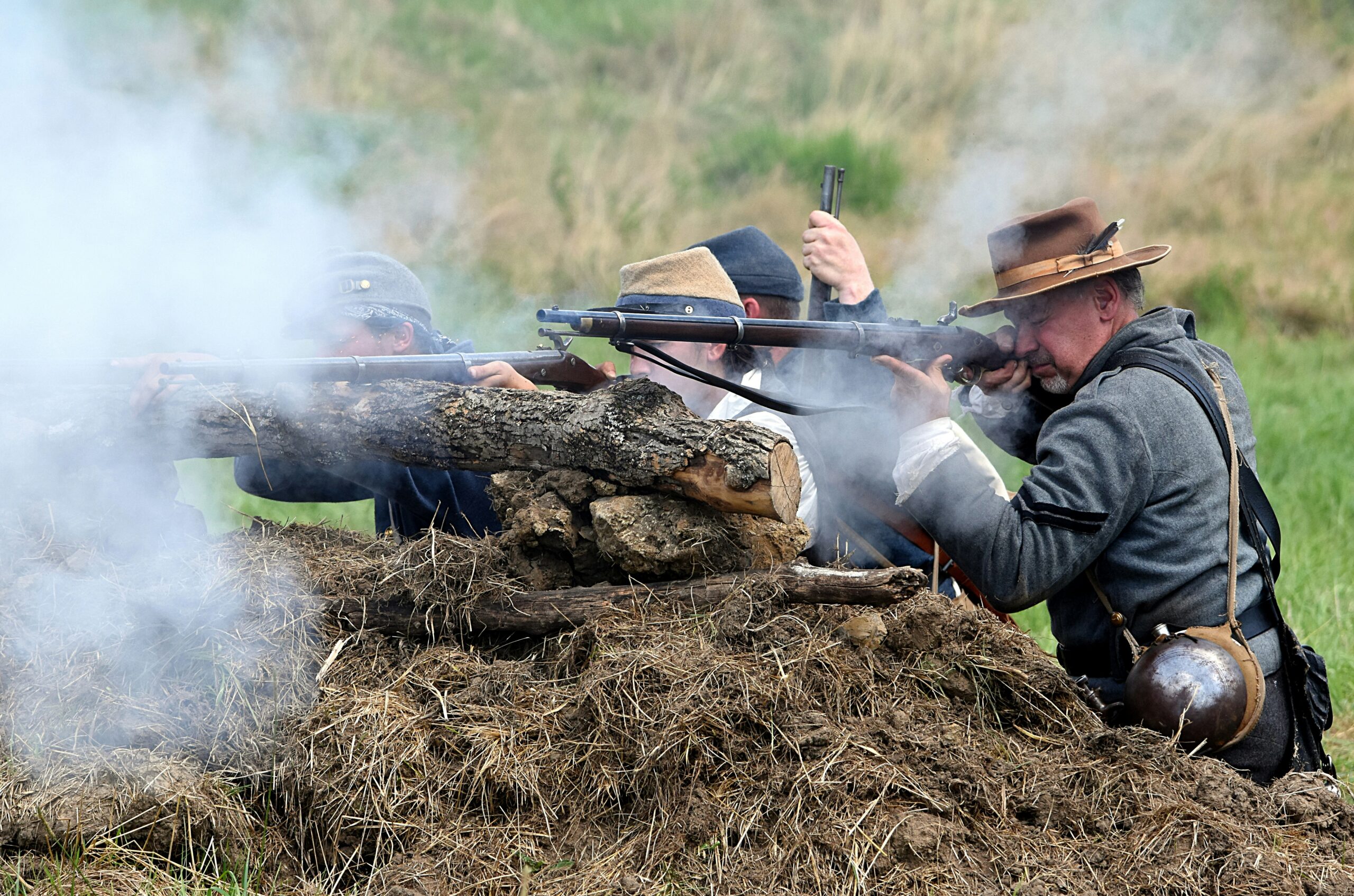Hunting scopes are essential tools for any avid hunter, providing the necessary accuracy and precision for successful shots. When it comes to choosing the perfect hunting scope, one important factor to consider is the type of reticle it offers. Reticles, also known as crosshairs, come in various designs and patterns, each serving a specific purpose. From the classic duplex reticle to the more advanced BDC reticle, understanding the different types available can greatly enhance your hunting experience. So, let’s dive into the world of hunting scope reticles and explore the options that will help you take your aim to the next level.
Duplex Reticle
Definition of duplex reticle
The duplex reticle is one of the most commonly used reticles in hunting scopes. It is characterized by its simple design, consisting of thick outer lines that taper towards the center of the reticle. The center of the reticle is usually left open, providing a clear and unobstructed view of the target. The thick outer lines make it easy to quickly acquire the target, while the tapering lines aid in precise aiming.
Ideal hunting situations for duplex reticle
The duplex reticle is particularly well-suited for hunting in low-light conditions or dense cover. Its simple design allows for quick target acquisition, which is crucial when time is of the essence. The thick outer lines help the hunter to quickly center the reticle around the target, even in low light or when the target is moving. Additionally, the open center of the reticle provides a clear view of the target, allowing for precise shot placement.
Pros and cons of duplex reticle
One of the main advantages of the duplex reticle is its simplicity. It is easy to use and does not require much explanation or training. This makes it a popular choice among beginner hunters or those who prefer a straightforward approach to aiming. Furthermore, the duplex reticle is versatile and can be used for various types of hunting, from close-range shots to longer distances.
However, the duplex reticle does have some limitations. One drawback is its lack of range estimation capabilities. Unlike other reticles that have markings or holdover points for different distances, the duplex reticle requires the hunter to estimate the range on their own. This can be challenging, especially for shots at longer distances. Additionally, the thick lines of the duplex reticle can sometimes cover up smaller targets or make precise aiming more difficult.
Mildot Reticle
Explanation of mildot reticle
The mildot reticle is a popular choice among experienced hunters and long-range shooters. It is characterized by a series of evenly spaced dots or hash marks along the vertical and horizontal axes of the reticle. These dots are calibrated to correspond to specific angular measurements, usually in the form of milliradians (mils). By measuring the size of the target in relation to the dots, the shooter can estimate the distance to the target and make the necessary adjustments for accurate shot placement.
How to use a mildot reticle in hunting
To use a mildot reticle effectively in hunting, one must first understand the concept of milradian measurements and the relationship between target size and distance. By estimating the size of the target in mils, the shooter can then refer to the reticle to determine the distance to the target. This information can be invaluable when making adjustments for bullet drop or windage.
When using a mildot reticle, it is essential to practice range estimation in various hunting scenarios. By gaining experience and familiarizing oneself with the subtleties of target size estimation, hunters can improve their accuracy with this reticle. Additionally, using a mildot reticle in combination with a rangefinder can greatly enhance shot placement, especially for long-range shots.
Advantages and disadvantages of mildot reticle
One of the significant advantages of a mildot reticle is its versatility. It can be used effectively for a wide range of shooting distances and target sizes. The milradian measurements provide a standardized system that can be easily applied to different hunting scenarios. Additionally, the mildot reticle allows for precise holdover and windage adjustments, making it ideal for long-range shooting.
However, the mildot reticle does require some level of training and practice to use effectively. Estimating target size accurately and making the appropriate adjustments may take time to master. Additionally, the mildot reticle may not be as quick to acquire targets as the duplex reticle, making it less ideal for fast-paced or close-range hunting situations.

BDC (Bullet Drop Compensator) Reticle
Understanding BDC reticle features
The BDC reticle, also known as the Bullet Drop Compensator reticle, is designed to help shooters compensate for bullet drop over various distances. It typically features horizontal lines or stadia marks that correspond to different ranges. These marks are calibrated based on the ballistics of a specific cartridge or load, allowing the shooter to make the necessary holdover adjustments for accurate shot placement at different distances.
Ideal hunting situations for BDC reticle
The BDC reticle is particularly beneficial for hunting situations where shots are taken at varying distances. It eliminates the need for holdover estimation or using a separate rangefinder, streamlining the shooting process. This reticle excels in scenarios where quick target acquisition and rapid follow-up shots are necessary, such as when hunting game that may be moving or in open terrain where distance changes frequently.
Pros and cons of BDC reticle
One of the significant advantages of the BDC reticle is its simplicity and ease of use. Once the shooter has determined the appropriate zero distance and understood the stadia marks’ calibration, they can quickly make the necessary holdover adjustments for shots at different distances. This makes the BDC reticle ideal for hunters who prefer a straightforward aiming solution.
However, BDC reticles are generally specific to a particular cartridge or load. If the shooter is using a different ammunition or if the atmospheric conditions deviate significantly from the calibration, the BDC reticle may not be as accurate. Additionally, the stadia marks’ calibration may not be as precise as other reticles, limiting its effective range for long-range shooting.
MOA (Minute of Angle) Reticle
Definition of MOA reticle
The MOA reticle, also known as the Minute of Angle reticle, utilizes angular measurements to allow for precise holdover and windage adjustments. The reticle features markings that correspond to specific angular values, usually expressed in minutes of angle. By measuring the target size or the distance between impacts, the shooter can make the necessary adjustments to compensate for bullet drop or wind drift.
Benefits of MOA reticle in certain hunting situations
The MOA reticle offers several advantages in specific hunting situations. One benefit is its compatibility with MOA turrets found on many hunting scopes. By using an MOA reticle in conjunction with MOA adjustments on the scope, shooters can easily translate holdover and windage adjustments between the reticle and turrets. This allows for quick and precise adjustments without the need for complicated calculations.
Additionally, the MOA reticle’s angular measurements provide a reliable and repeatable system for adjusting for bullet drop and windage. With practice, shooters can become proficient in quickly estimating target size or distance and making the necessary adjustments. This can be particularly valuable for long-range shooting where precise holdover and windage adjustments are crucial for accurate shot placement.
Disadvantages of MOA reticle
Despite its advantages, the MOA reticle may not be as intuitive for beginners or shooters who are not familiar with angular measurements. Estimating target size or distance in minutes of angle requires practice and experience. Furthermore, the MOA system is not as widely used or standardized as the milradian system, making it less compatible with other shooting tools and references.

Rangefinder Reticle
Understanding how rangefinder reticle works
A rangefinder reticle integrates a built-in rangefinder into the scope’s reticle, eliminating the need for a separate rangefinder device. It typically consists of various scales or markings that can be used to estimate the distance to the target. By aligning the target with these markings, the shooter can determine the range and make the necessary holdover or elevation adjustments for accurate shot placement.
Ideal scenarios for rangefinder reticle
The rangefinder reticle is particularly useful in scenarios where a quick and accurate estimation of target range is crucial. It eliminates the need to carry an additional rangefinder device, streamlining the shooting process. The rangefinder reticle is especially valuable for hunters who frequently encounter varying target distances or engage in long-range shooting, where precise holdover adjustments are vital.
Benefits and drawbacks of rangefinder reticle
One of the main advantages of the rangefinder reticle is its convenience. By integrating the rangefinder into the reticle, it simplifies the shooting process and reduces the need for additional equipment. This can save time and improve efficiency, especially when quick follow-up shots are necessary. Additionally, rangefinder reticles can be highly accurate, especially when properly calibrated and used with practice.
However, rangefinder reticles may not be as precise as dedicated rangefinder devices. The markings or scales in the reticle can be less detailed or lack the same level of accuracy. Furthermore, using the rangefinder reticle effectively requires practice and familiarity with the reticle’s specific calibration. In some cases, additional adjustments may still be required, especially for shots at extreme distances or in challenging conditions.
Illuminated Reticle
Explanation of illuminated reticle
An illuminated reticle features an illuminated center dot or crosshair, which provides enhanced visibility in low-light conditions. The illumination can be controlled by the shooter, allowing for different brightness levels or even color options. This feature ensures that the reticle stands out against dark backgrounds, making target acquisition and aiming much easier in suboptimal lighting conditions.
Ideal hunting situations for illuminated reticle
The illuminated reticle is particularly advantageous in low-light conditions, such as dawn or dusk, when visibility is reduced. It enables hunters to maintain a clear sight picture, even when targeting animals in shadowy areas or against darker backgrounds. The increased contrast provided by the illuminated reticle can significantly improve shot placement accuracy and overall success in these challenging lighting conditions.
Pros and cons of illuminated reticle
One of the significant advantages of the illuminated reticle is its ability to enhance visibility in low-light situations. This feature can be particularly valuable for hunting, as it ensures that the reticle remains visible even when natural light conditions are less favorable. Additionally, some illuminated reticles offer color options, allowing hunters to tailor their reticle’s appearance to their personal preferences or specific environmental conditions.
However, the illuminated reticle does have a couple of drawbacks. The illumination feature requires a power source, usually a battery, which needs to be monitored and replaced regularly to prevent the reticle from becoming dim or completely non-functional. Additionally, the illumination feature may add some weight to the scope, which could be a consideration for hunters who prioritize lightweight gear.

German Reticle
Understanding German reticle
The German reticle, also known as the #4 reticle, is a classic design that originated in Germany. It is characterized by its heavy posts at the 3, 6, and 9 o’clock positions and a thin crosshair. The heavy posts aid in quick target acquisition, while the thin crosshair allows for precise aiming. The German reticle is known for its simplicity and versatility, making it a popular choice among hunters.
Best hunting scenarios for German reticle
The German reticle is well-suited for hunting in dense cover or when targeting fast-moving game. The heavy posts make it easy to quickly center the reticle on the target, even when time is limited or the target is in motion. The thin crosshair allows for accurate shot placement, ensuring that the hunter can make precise shots in challenging hunting scenarios.
Advantages and disadvantages of German reticle
The German reticle offers several advantages that make it an appealing choice for many hunters. Its simplicity and uncluttered design make it easy to use and intuitive. The heavy posts aid in quick target acquisition, ensuring that the hunter can acquire the target rapidly. Additionally, the thin crosshair allows for precise aiming, making it suitable for shots that require a high level of accuracy.
However, the German reticle does have a potential drawback. The heavy posts, while aiding in target acquisition, can sometimes obstruct smaller targets or make it challenging to aim with extreme precision at longer distances. In situations where shooting at small or distant targets is common, a reticle with finer markings or additional features may be more suitable.
Dot Reticle
Understanding dot reticle
The dot reticle is a minimalist design that consists of a single dot placed at the reticle’s center point. This reticle type is characterized by its simplicity, which allows for rapid target acquisition and precise aiming. The dot reticle is a versatile option that can be used for various hunting scenarios, from close-range shots to longer distances.
The hunting scenarios best for dot reticle
The dot reticle is particularly well-suited for scenarios that require quick target acquisition and fast shots. Its simplicity makes it easy to acquire targets, even in low-light conditions or when the target is moving. The single dot at the center of the reticle allows for precise aiming, ensuring accurate shot placement. Additionally, the dot reticle’s uncluttered design offers a clear view of the target, making it suitable for hunting in dense cover or when dealing with small targets.
Likely issues with the dot reticle
Despite its versatility, the dot reticle may have limitations in certain hunting situations. One potential drawback is its lack of range estimation capabilities. Without additional markings or holdover points, the dot reticle requires the hunter to estimate the range on their own. This can be challenging, especially for shots at longer distances where bullet drop becomes a significant factor. Additionally, the single dot may cover up smaller targets or make precise aiming more difficult compared to reticles with additional features or markings.
Hashmark Reticle
Definition of hashmark reticle
The hashmark reticle is characterized by a series of evenly spaced hash marks along the reticle’s vertical and horizontal axes. These hash marks allow for precise holdover and windage adjustments, making it a popular choice among long-range hunters and shooters. Each hash mark corresponds to a specific distance or angular measurement and can be used to estimate range, adjust for bullet drop, and compensate for wind drift.
Ideal hunting situations for hashmark reticle
The hashmark reticle is particularly advantageous in hunting scenarios where shots are taken at longer distances or in conditions with significant wind variations. The hash marks provide a standardized system for estimating range and making the necessary holdover and windage adjustments. This reticle excels in open terrain, where distance estimation and precise aiming are crucial for accurate shot placement.
Pros and cons of hashmark reticle
One of the main advantages of the hashmark reticle is its precision and versatility. The evenly spaced hash marks allow for precise holdover adjustments, making it ideal for long-range shooting. Additionally, the hashmark reticle provides a standardized system that can be applied to different hunting scenarios, simplifying the aiming process and reducing the need for complex calculations.
However, the hashmark reticle may have a learning curve for shooters who are not familiar with angular measurements or range estimation using hash marks. Understanding the reticle’s specific calibration and gaining experience in estimating range accurately may take time and practice. Additionally, the hashmark reticle’s finer details may be more challenging to see in low-light conditions or against dark backgrounds, which could affect target acquisition.
Horizon Reticle
Explanation of horizon reticle
The horizon reticle, also known as the horizontal duplex reticle, features a thick horizontal line that bisects the center of the reticle. This reticle design is intended to aid in leveling the scope and ensuring a level horizon during shooting. It can be particularly beneficial for long-range shooting or situations where maintaining a level scope is crucial.
Best scenarios to use horizon reticle in hunting
The horizon reticle is particularly useful in open terrain or when shooting at long distances. It allows the shooter to ensure that the scope is level, which can greatly affect shot accuracy, especially over extended ranges. Additionally, the horizon reticle can be helpful when hunting in mountainous areas where uneven ground or steep angles are common. Ensuring a level scope and a stable shooting platform is essential for accurate shot placement in these scenarios.
Advantages and disadvantages of horizon reticle
One of the main advantages of the horizon reticle is its ability to aid in leveling the scope, ensuring a level horizon during shooting. This can greatly enhance shot accuracy, particularly in long-range shooting or situations where uneven ground or steep angles are present. Additionally, the simplicity of the horizon reticle makes it easy to use and does not require additional calculations or adjustments.
However, the horizon reticle may have limited use in scenarios where leveling the scope is less critical. Its main purpose is to assist in leveling the scope and maintaining a level horizon. This reticle may not offer the same versatility or range estimation capabilities as other reticle types. For hunters who prioritize other features or shooting requirements, alternative reticle options may be more suitable.
